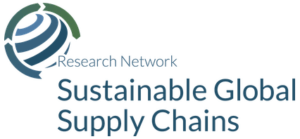Counting carbon in global trade Why imported emissions challenge the climate regime and what might be done about it
Krishnan, A and Maxwell, S
2020
#Corporate responsibility and lead firms
The foundations of the climate regime are under threat, with significant implications for developing countries. This report identifies two main threats to the climate regime. The first is the growing importance of emissions traded across national borders, currently accounting for up to 38% of global emissions, with developed countries being net importers and emerging economies mostly net exporters. The second is the increasing focus on action to reduce the carbon intensity of trade, including, of course, exports from developing to developed countries. The measurement, reporting and certification of carbon emissions plays a key role. In the best case, developing countries may find that the reshaping of the climate regime acts to their benefit, for example encouraging faster progression to low-carbon output and opening new export opportunities for low-carbon products. In the worst case, however, developing countries may find themselves bearing increasing costs for monitoring and certifying carbon content, and perhaps being at a competitive disadvantage in a low-carbon trading system.

